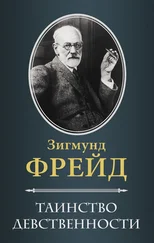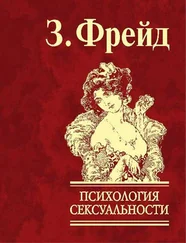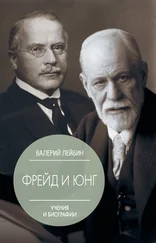Зигмунд Фрейд - Totem and Taboo
Здесь есть возможность читать онлайн «Зигмунд Фрейд - Totem and Taboo» весь текст электронной книги совершенно бесплатно (целиком полную версию без сокращений). В некоторых случаях можно слушать аудио, скачать через торрент в формате fb2 и присутствует краткое содержание. Год выпуска: 2014, Издательство: epubBooks Classics, Жанр: Психология, на английском языке. Описание произведения, (предисловие) а так же отзывы посетителей доступны на портале библиотеки ЛибКат.
- Название:Totem and Taboo
- Автор:
- Издательство:epubBooks Classics
- Жанр:
- Год:2014
- ISBN:нет данных
- Рейтинг книги:3 / 5. Голосов: 1
-
Избранное:Добавить в избранное
- Отзывы:
-
Ваша оценка:
- 60
- 1
- 2
- 3
- 4
- 5
Totem and Taboo: краткое содержание, описание и аннотация
Предлагаем к чтению аннотацию, описание, краткое содержание или предисловие (зависит от того, что написал сам автор книги «Totem and Taboo»). Если вы не нашли необходимую информацию о книге — напишите в комментариях, мы постараемся отыскать её.
Totem and Taboo — читать онлайн бесплатно полную книгу (весь текст) целиком
Ниже представлен текст книги, разбитый по страницам. Система сохранения места последней прочитанной страницы, позволяет с удобством читать онлайн бесплатно книгу «Totem and Taboo», без необходимости каждый раз заново искать на чём Вы остановились. Поставьте закладку, и сможете в любой момент перейти на страницу, на которой закончили чтение.
Интервал:
Закладка:
If primitive man reacted to the phenomena that stimulated his reflection with the formation of conceptions of the soul, and then transferred these to objects of the outer world, his attitude will be judged to be quite natural and in no way mysterious. In view of the fact that animistic conceptions have been shown to be similar among the most varied races and in all periods, Wundt states that these “are the necessary psychological product of the myth–forming consciousness, and primitive animism may be looked upon as the spiritual expression of man’s natural state in so far as this is at all accessible to our observation” [94] l.c. , p. 154.
. Hume has already justified the animation of the inanimate in his Natural History of Religions , where he said: “There is a universal tendency among mankind to conceive all beings like themselves and to transfer to every object those qualities with which they are familiarly acquainted and of which they are intimately conscious” [95] See Tylor, Primitive Culture , Vol. I, p. 477.
.
Animism is a system of thought, it gives not only the explanation of a single phenomenon, but makes it possible to comprehend the totality of the world from one point, as a continuity. Writers maintain that in the course of time three such systems of thought, three great world systems came into being: the animistic (mythological), the religious, and the scientific. Of these animism, the first system is perhaps the most consistent and the most exhaustive, and the one which explains the nature of the world in its entirety. This first world system, of mankind is now a psychological theory. It would go beyond our scope to show how much of it can still be demonstrated in the life of to–day, either as a worthless survival in the form of superstition, or in living form, as the foundation of our language, our belief, and our philosophy.
It is in reference to the successive stages of these three world systems that we say that animism in itself was not yet a religion but contained the prerequisites from which religions were later formed. It is also evident that myths are based upon animistic foundations, but the detailed relation of myths to animism seem unexplained in some essential points.
Our psychoanalytic work will begin at a different point. It must not be assumed that mankind came to create its first world system through a purely speculative thirst for knowledge. The practical need of mastering the world must have contributed to this effort. We are therefore not astonished to learn that something else went hand in hand with the animistic system, namely the elaboration of directions for making oneself master of men, animals and things, as well as of their spirits. S. Reinach [96] Cultes, Mythes et Religions , T. II: Introduction , p. XV, 1909.
wants to call these directions, which are known under the names of ‘sorcery and magic’, the strategy of animism; With Mauss and Hubert, I should prefer to compare them to a technique [97] Année Sociologique , Seventh Vol, 1904.
.
Can the conceptions of sorcery and magic be separated? It can be done if we are willing on our own authority to put ourselves above the vagaries of linguistic usage. Then sorcery is essentially the art of influencing spirits by treating them like people under the same circumstances, that is to say by appeasing them, reconciling them, making them more favourably disposed to one, by intimidating them, by depriving them of their power and by making them subject to one’s will; all that is accomplished through the same methods that have been found effective with living people. Magic, however, is something else; it does not essentially concern itself with spirits, and uses special means, not the ordinary psychological method. We can easily guess that magic is the earlier and the more important part of animistic technique, for among the means with which spirits are to be treated there are also found the magic kind [98] To frighten away a ghost with noise and cries is a form of pure sorcery; to force him to do something by taking his name is to employ magic against him.
, and magic is also applied where spiritualization of nature has not yet, as it seems to us, been accomplished.
Magic must serve the most varied purposes. It must subject the processes of nature to the will of man, protect the individual against enemies and dangers, and give him the power to injure his enemies. But the principles on whose assumptions the magic activity is based, or rather the principle of magic, is so evident that it was recognized by all authors. If we may take the opinion of E. B. Tylor at its face value it can be most tersely expressed in his words: “mistaking an ideal connection for a real one”. We shall explain this characteristic in the case of two groups of magic acts.
One of the most widespread magic procedures for injuring an enemy consists of making an effigy of him out of any kind of material. The likeness counts for little, in fact any object may be ‘named’ as his image. Whatever is subsequently done to this image will also happen to the hated prototype; thus if the effigy has been injured in any place he will be afflicted by a disease in the corresponding part of the body. This same magic technique, instead of being used for private enmity can also be employed for pious purposes and can thus be used to aid the gods against evil demons. I quote Frazer [99] The Magic Art , II. p. 67.
: “Every night when the sun–god Ra in ancient Egypt sank to his home in the glowing west he was assailed by hosts of demons under the leadership of the archfiend Apepi. All night long he fought them, and sometimes by day the powers of darkness sent up clouds even into the blue Egyptian sky to obscure his light and weaken his power. To aid the sun–god in this daily struggle, a ceremony was daily performed in his temple at Thebes. A figure of his foe Apepi, represented as a crocodile with a hideous face or a serpent with many coils, was made of wax, and on it the demon’s name was written in green ink. Wrapt in a papyrus case, on which another likeness of Apepi had been drawn in green ink, the figure was then tied up with black hair, spat upon, hacked with a stone knife and cast on the ground. There the priest trod on it with his left foot again and again, and then burned it in a fire made of a certain plant or grass. When Apepi himself had thus been effectively disposed of, waxen effigies of each of his principle demons, and of their fathers, mothers, and children, were made and burnt in the same way. The service accompanied by the recitation of certain prescribed spells, was repeated not merely morning, noon and night, but whenever a storm was raging or heavy rain had set in, or black clouds were stealing across the sky to hide the sun’s bright disk. The fiends of darkness, clouds and rain, felt the injury inflicted on their images as if it had been done to themselves; they passed away, at least for a time, and the beneficent sun–god shone out triumphant once more” [100] The Biblical prohibition against making an image of anything living hardly sprang from any fundamental rejection of plastic art, but was probably meant to deprive magic, which the Hebraic religion proscribed, of one of its instruments. Frazer, l.c. , p. 87, note.
.
There is a great mass of magic actions which show a similar motivation, but I shall lay stress upon only two, which have always played a great rôle among primitive races and which have been partly preserved in the myths and cults of higher stages of evolution: the art of causing rain and fruitfulness by magic. Rain is produced by magic means, by imitating it, and perhaps also by imitating the clouds and storm which produce it. It looks as if they wanted to ‘play rain’. The Ainos of Japan, for instance, make rain by pouring out water through a big sieve, while others fit out a big bowl with sails and oars as if it were a ship, which is then dragged about the village and gardens. But the fruitfulness of the soil was assured by magic means by showing it the spectacle of human sexual intercourse. To cite one out of many examples; in some part of Java, the peasants used to go out into the fields at night for sexual intercourse when the rice was about to blossom in order to stimulate the rice to fruitfulness through their example [101] The Magic Art , II, p. 98.
. At the same time it was feared that proscribed incestuous relationships would stimulate the soil to grow weeds and render it unfruitful [102] An echo of this is to be found in the Oedipus Rex of Sophocles.
.
Интервал:
Закладка:
Похожие книги на «Totem and Taboo»
Представляем Вашему вниманию похожие книги на «Totem and Taboo» списком для выбора. Мы отобрали схожую по названию и смыслу литературу в надежде предоставить читателям больше вариантов отыскать новые, интересные, ещё непрочитанные произведения.
Обсуждение, отзывы о книге «Totem and Taboo» и просто собственные мнения читателей. Оставьте ваши комментарии, напишите, что Вы думаете о произведении, его смысле или главных героях. Укажите что конкретно понравилось, а что нет, и почему Вы так считаете.






